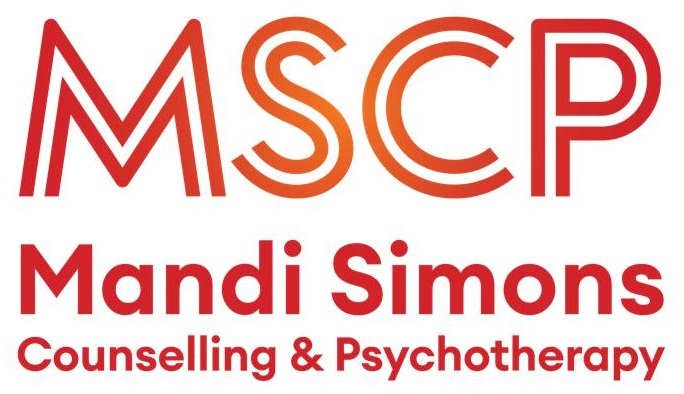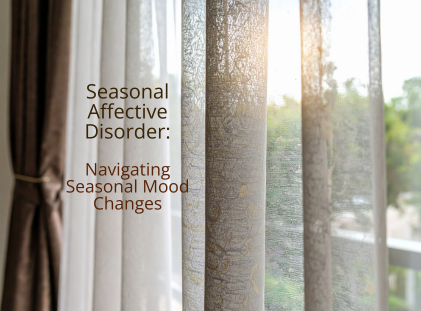As the days get shorter and the morning light arrives later, many people notice their mood dipping. You might feel more tired, less motivated, or find yourself withdrawing from social plans. It can be easy to dismiss it as just ‘winter blues’ and hunkering down for the cold season.
For many people, this change is more profound. It can be a sign of Seasonal Affective Disorder (SAD), which is a type of depression that follows a seasonal pattern, most commonly appearing during the colder and darker months of autumn and winter.
What is SAD?
SAD is a type of depression that typically occurs when daylight hours decrease. According to the NHS, it is linked to how our internal body clock responds to changes in light levels. Our circadian rhythm regulates sleep, mood, hormones and energy.
When we get less sunlight, it disrupts our serotonin and melatonin levels. These chemicals play an important role in our mood and the quality and quantity of our sleep, so it’s no surprise that when they are disrupted, our mood drops and our energy levels slump. (Both the NHS and Mind UK recognise this link between reduced daylight, serotonin and melatonin.)
It follows that many people find their symptoms ease again as spring arrives.
Common Signs You Might Have SAD
You don’t need to experience all symptoms to be affected. SAD can vary in intensity from person to person, but common signs include:
- Persistent low mood
- Feeling listless, sluggish and low in energy most days
- Craving more carbs than usual, overeating comfort food and gaining weight
- Sleeping more than usual or not sleeping enough
- Withdrawing from people and social plans you usually enjoy
- Feeling tearful, hopeless, anxious or angry (where not appropriate)
- Not enjoying activities that you usually do
- Difficulty concentrating and feeling foggy-headed
If you recognise several of these in yourself every winter, it’s worth talking to a GP or therapist. You don’t have to ‘push through it.’
Why does SAD occur?
The research shows that although there isn’t one specific cause of SAD, it’s thought to occur at least partly due to the relationship between our bodies and sunlight.
Sunlight and our internal body clock (circadian rhythm)
According to the Royal College of Psychiatrists, reduced daylight creates a shift in our body clock, which then negatively impacts mood, motivation and energy.
Sunlight and serotonin
Sunlight affects serotonin; our happy hormone. Serotonin helps balance us emotionally and keeps our mood stable. So the less serotonin we have, the lower, more irritable or more withdrawn we may feel.
Sunlight and melatonin (our sleep hormone)
Light suppresses melatonin during the day to keep us feeling awake and alert.
As daylight reduces, the body may produce too much melatonin, which can leave us feeling drowsy, sleepy and low.
Sunlight and Vitamin D
Although Vitamin D deficiency is not confirmed as a cause of SAD, some research suggests that low Vitamin D levels are linked to depression, and winter sunlight is insufficient for most people in the UK to produce adequate Vitamin D.
How to cope with SAD: Practical steps for managing symptoms
There isn’t one single solution, but small, consistent steps can make a big difference.
- Get as much natural light as possible
Try to get outside during daylight hours, even on cloudy days. Morning light in your eyes is especially beneficial. A short walk to boost your mood will help as well, but if you can’t manage that, then even sitting near a bright window can help regulate your body clock. - Invest in a light therapy lamp
Light boxes designed for SAD can simulate natural daylight and may help rebalance melatonin and serotonin levels. (Always check with your GP before starting light therapy if you have any eye or skin conditions.) - Stick to a regular sleep routine
Stick to consistent sleep and wake times, even on weekends. This helps stabilise your body clock and supports better energy levels. - Stay active, gently
Exercise is proven to boost mood, reduce anxiety, and increase serotonin. Choose activities you enjoy, from gentle yoga and stretching to walks in nature. - Nourish your body to nourish your mind
Winter cravings for carbs and comfort food are normal, but aim for balance. Include complex carbs, lean protein and omega-3-rich foods like salmon, flaxseeds and walnuts to support brain health. - Connect with others
It’s easy to isolate yourself when your energy dips, but even brief social contact can lift your mood. Make plans you can look forward to, to get you out and about, especially during daylight hours. - Seek professional support
If your symptoms feel overwhelming, therapy can help you understand and manage the emotional impact of SAD.
Take SAD seriously
SAD isn’t just ‘feeling down’ because it’s cold and dark outside, and your symptoms shouldn’t be dismissed. It’s a real and recognised condition that affects mental health and daily functioning. The good news is that with awareness and the right support, it’s highly manageable.
Recognising that you have it is the first step. From there, self-care, structure, and connection can help you navigate the darker months with more ease and less pressure.
Get the support you need
If you’ve noticed your mood dip as the seasons change and it happens year after year, you’re not alone. SAD is common and treatable.
With the right understanding and tools, you can reclaim your energy, mood, and motivation through the winter months.
If you’re struggling, I offer one-to-one therapy for adults, children and teens both in person and online. Together, we can explore what helps you feel more grounded, resilient, and connected, whatever the season.
Further Reading (Optional)
(Listed here for reassurance — no pressure to click away)
NHS – Seasonal Affective Disorder
Mind UK – SAD Information & Support
Royal College of Psychiatrists – Understanding SAD

